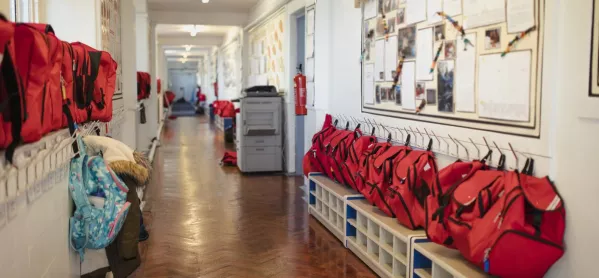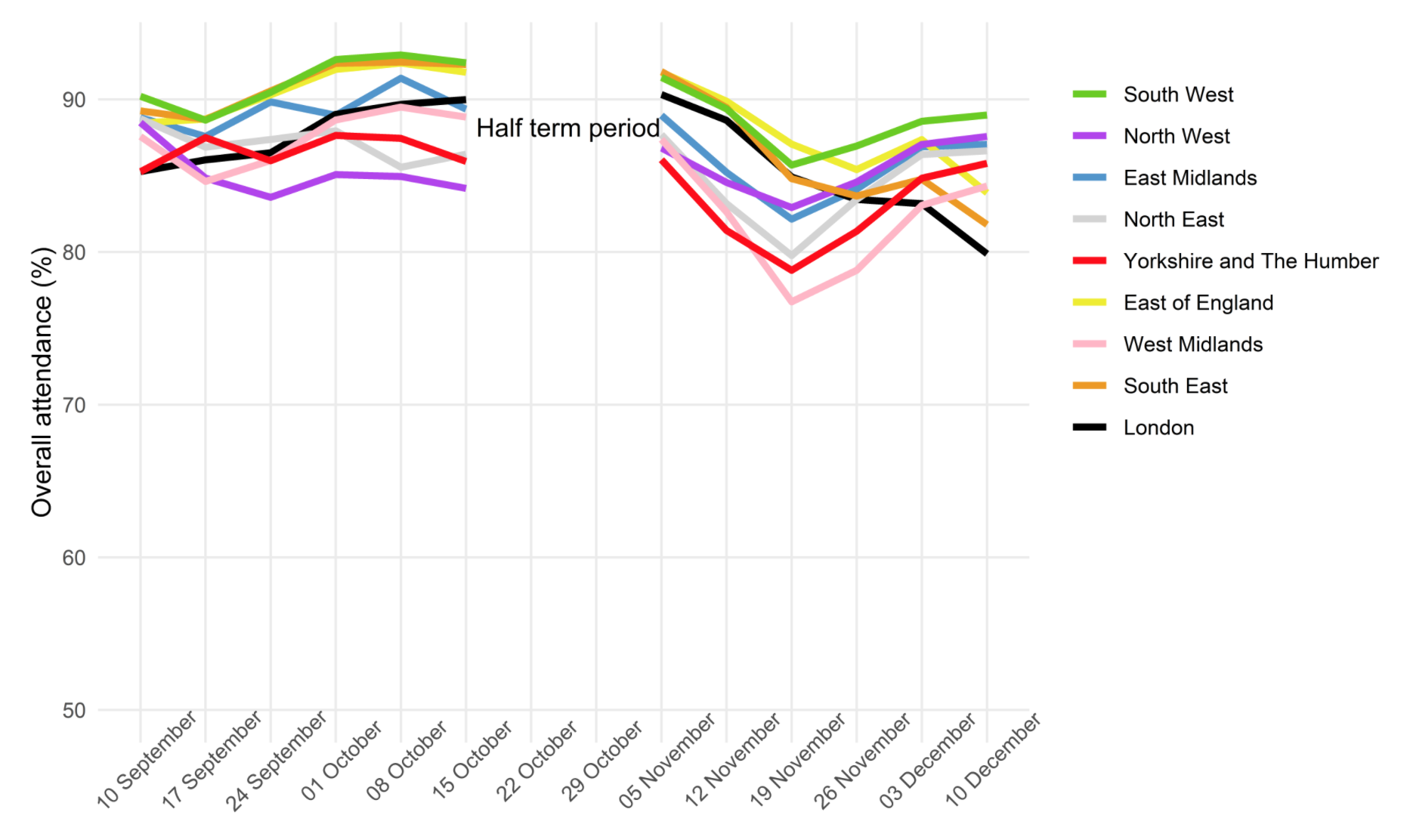Covid: ‘Hidden’ data shows ‘huge’ school attendance gap

Parts of the country hardest hit by Covid have seen almost two-thirds of secondary students absent in recent weeks, while in other areas nearly all have been at school, new figures show.
Data from the Department for Education reveals that attendance has dropped to as low as 37 per cent in one local authority area, compared with more than 90 per cent in the same period elsewhere.
The DfE has published a regional and local breakdown of attendance rates as part of its weekly data for the first time today.
Covid: Lack of regional data has undermined schools
Exclusive: Poorer schools hit twice as hard by lockdown
Union: Call for probe into lack of data on teacher attendance
Nationally, the data shows that, as of last Thursday, attendance in schools was 85 per cent, down from 86 per cent a week earlier.
The proportion of schools with pupils off self-isolating remained at 28 per cent.
But a breakdown at regional and local authority level reveals huge disparities.
Kevin Courtney, joint general secretary of the NEU teaching union, said the new local figures that had been “hidden from the public” until now reveal the profound impact the coronavirus has had on schooling in different parts of the country.
Coronavirus: School attendance varies between areas
The figures show that on 26 November, secondary school attendance in Sandwell, in the West Midlands, dropped to 37 per cent. In contrast, Rutland, in the East Midlands, saw 94 per cent of students in school that week.
Medway, in Kent, saw secondary school attendance drop to 38 per cent on 19 November and had the lowest figures last week, with 53 per cent of secondary school students in attendance.
And Hull, which had been the country’s Covid hotspot with more than 750 cases per 100,000 people, saw almost half of secondary school students off for three weeks in a row last month, with attendance at 56 per cent at the lowest point.
Teaching unions and policy analysts said the new data shows the scale of the differing disruption that the Department for Education needs to take into account for exams and helping pupils to catch up.
Mr Courtney said: “For example, Hull has had less than 60 per cent attendance in their secondary schools for much of the last half-term. Rochdale averaged just 70 per cent attendance in their secondary schools over the whole term.
“Bury, Rotherham and Gateshead had an average of more than 90 per cent of their secondary schools with pupils self-isolating.
“In these circumstances, we cannot see how it is fair on these pupils to sit exams under the same conditions as pupils in York or West Sussex, where secondary attendance averaged 90 per cent over the term.”
Natalie Perera, chief executive of the Education Policy Institute think tank, said: “These stark school attendance figures show the huge disparities in the amount of face-to-face learning pupils have received across the country.
“The fact that attendance within the same week ranges by as much as 37 per cent to 95 per cent across England shows the monumental challenge facing the government in addressing differential learning loss.
“We’ve seen policies aimed at all pupils across-the-board to help them catch up with their learning this year, but so far the government has not dealt with the fact that some pupils will have lost much more learning than others.
“Policymakers face a big task in addressing these growing learning gaps. While measures have been put in place to help all pupils with their exams next summer, there is still the fundamental question of how to support those who are at more of a disadvantage than others after having been out of the classroom for very long periods.”
The data also shows how the Covid disruption in schools has moved around the country this term.
At different points in the term, the North West, Yorkshire, the West Midlands and now London have been the hardest hit by the virus in terms of its impact on attendance.

The biggest regional variation was on 19 November when attendance in the West Midlands was 77 per cent, compared with 87 per cent in the East of England.
The DfE has been criticised for failing to publish regional attendance data until now.
When schools standard minister Nick Gibb announced the plan to publish this data today, Frank Norris, an education adviser at the Northern Powerhouse Partnership, warned that this was “too little, too late” and that school leaders have needed access to this information throughout the term
Labour’s shadow schools minister, Wes Streeting, said that failure to produce regular data until now has hidden the reality of the educational inequality that Covid disruption has caused.
A Tes investigation in October revealed how primaries in deprived areas had far lower lockdown attendance than those in the wealthiest areas.
You need a Tes subscription to read this article
Subscribe now to read this article and get other subscriber-only content:
- Unlimited access to all Tes magazine content
- Exclusive subscriber-only stories
- Award-winning email newsletters
Already a subscriber? Log in
You need a subscription to read this article
Subscribe now to read this article and get other subscriber-only content, including:
- Unlimited access to all Tes magazine content
- Exclusive subscriber-only stories
- Award-winning email newsletters